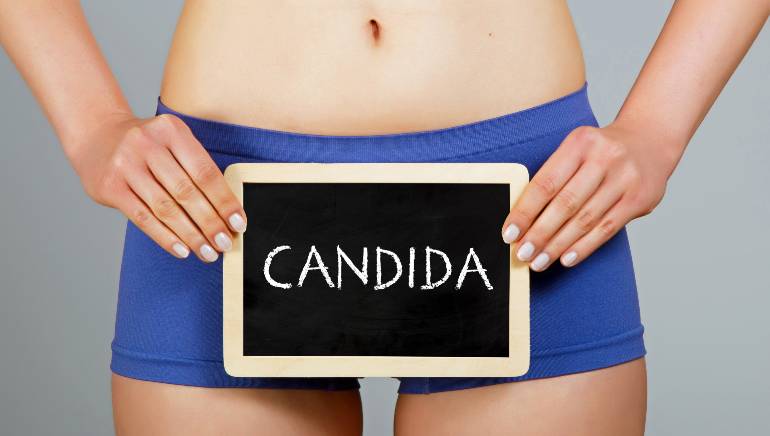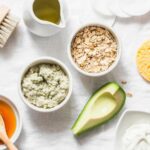Antibiotics might help deal with bacterial infections by killing micro organism and slowing progress. Nonetheless, yeast infections can be obtained from antibiotics.
Antibiotics are highly effective medicine that assist deal with bacterial infections. Urinary tract infections, pneumonia, and ear infections are simply a few of the well being points these medicine can deal with. All it’s important to do is have tablets, capsules or liquids or apply cream and lotion. They will successfully deal with some infectious ailments, however they will additionally trigger well being issues. You will get yeast infections from antibiotics. Such a an infection happens when there may be overgrowth of Candida micro organism in numerous elements of the physique, together with the vagina. Perceive the connection between medicine and yeast an infection.
What’s yeast an infection?
Yeast an infection or candidiasis is the overgrowth of fungi brought on by Candida, a sort of yeast that’s naturally current in our physique. “When an imbalance happens, it typically impacts the vagina, mouth, throat and gastrointestinal tract,” says gynecologist Dr. Sriprada Vinekar. In response to the US Facilities for Illness Management and Prevention, vaginal yeast infections trigger persistent itching, however they’re probably the most widespread fungal infections. “This may very well be because of excessive sugar consumption, weakened immune system, modifications in hormones throughout being pregnant, or sporting tight clothes,” consultants say.

Yeast An infection from Antibiotics: What’s Hyperlink?
It’s potential to acquire yeast infections from antibiotics. A 2008 research printed within the Journal of the American Board of Household Medication discovered that non-pregnant girls ages 18 to 64 required oral antibiotics for non-gyNaecological ailments. Researchers discovered that oral antibiotic use elevated the prevalence of vaginal yeast infections.
This is how antibiotics may cause vaginal yeast infections:
1. Kill good micro organism
Lactic acid micro organism assist preserve a barely acidic vaginal pH (potential of hydrogen) and stop yeast overgrowth. “You will get vaginal yeast infections from antibiotics as a result of the drugs reduces these good micro organism and makes yeast extra more likely to flourish,” says the skilled.
2. It weakens immune protection
Antibiotics can cut back the effectiveness of the immune system in combating infections. “They will change the immune system’s response to pathogens akin to micro organism, fungi, and viruses. When the immune system weakens, the physique’s pure potential to proceed to regulate Candida, which might result in an infection,” consultants say.
Yeast infections from antibiotics: know which is extra more likely to trigger candidiasis
Yeast infections from antibiotics are potential, however not all of them trigger it. “Broad-spectrum antibiotics focusing on a variety of micro organism are more likely to trigger yeast infections,” says Dr. Vinekar. A 2023 research printed in Cell Host & Microbe confirmed that individuals who obtained broad-spectrum antibiotics for greater than seven days elevated the chance of creating candidiasis.
Listed here are broad spectrum antibiotics that may trigger yeast infections.
- tetracyclineThese medicine can deal with chlamydia infections, pelvic inflammatory ailments, syphilis, and zits.
- Clindamycinis: Used to deal with pores and skin, lung and blood infections.
- Amoxicillin: Used to deal with chest infections, together with pneumonia.
- CephalosporineThey will deal with urinary tract infections, ear infections, pneumonia, meningitis, go illness.
“Girls taking these antibiotics, particularly for lengthy durations of time, are at a better danger of creating yeast infections,” consultants say.
Find out how to eliminate yeast infections from antibiotics?
In case you develop yeast infections from antibiotics, observe these steps to deal with and stop them.
1. Use antifungal drugs
Over-the-counter antifungal lotions and dip brokers akin to clotrimazole, miconazole, or thioconazole could also be helpful in treating vaginal yeast infections from antibiotics. “Fluconazole is a single-dose oral antifungal that a physician can prescribe,” says Dr. Vinekar. If you’re often required antibiotics, ask your physician about taking antifungal drugs together with antibiotics to forestall yeast overgrowth.
2. Take probiotics
Yogurt accommodates lactobacillus. This helps to revive good micro organism within the physique. “Probiotic dietary supplements might be consumed with Lactobacillus axidophilus to keep up vaginal pH stability,” says an skilled. Nonetheless, seek the advice of your physician earlier than taking these dietary supplements to deal with vaginal yeast infections from antibiotics.

3. Enhance your consumption of pure antifungal meals
There may be additionally pure vaginal yeast an infection therapy. “Garlic has garlic containing allicin, which has antifungal properties. Coconut oil also can assist deal with vaginal yeast infections from antibiotics, because it accommodates caprylic acid, which might struggle candida,” consultants say.
4. Keep away from irritating substances and fluids
Put on vaginal underwear and unfastened clothes to dry out the vaginal space and discourage the yeast from rising. “Additionally, keep away from scented soaps, vaginal dutch and ladies’s sprays that may exacerbate the irritation brought on by vaginal yeast infections from antibiotics,” the skilled says.
5. Keep hydration
Drink loads of water to assist wash away extra yeast out of your physique and take away vaginal discomfort. There are 8-10 glasses of water and wholesome drinks. “Additionally, yeast can simply thrive on sugar, so cut back sugar and refined carbohydrates,” consultants say.
Yeast infections from antibiotics are potential, particularly when taking a variety of medicine. When you have a vaginal yeast an infection, you could expertise itching. It has probiotics, maintains hydration and removes yeast infections utilizing anti-fungal lotions. Focus on along with your physician earlier than taking your medicine.
Associated FAQs
Find out how to wash away yeast out of your physique?
Overgrowth of yeast, significantly Candida, may cause an infection in numerous elements of the physique. To flush it off, you want a mixture of dietary modifications, hydration, probiotics, and way of life changes. Drink 8-10 glasses of water every single day to clean away toxins and extra yeast from the system via urine and sweat. Consumes fermented meals akin to kimchi, sauerkraut and sugar-free yogurt to revive intestinal stability.
Can ingesting lots of water provide help to clear up the yeast an infection?
Consuming a considerable amount of water might help assist your physique when washing away toxins. Hydration helps the physique remove extra yeast via urine and sweat. Correct hydration maintains optimum pH stability and makes yeast troublesome to thrive. Nonetheless, water alone can’t treatment yeast infections. You continue to want probiotics or fermented meals to stability your intestine and vaginal vegetation.
Is it regular to expertise itching after antibiotics?
Sure, feeling itching after taking antibiotics might be regular in some circumstances, however it could actually additionally point out an allergic response or a yeast an infection. Antibiotics kill each dangerous and helpful micro organism, destroying the vagina and intestinal flora. This could result in overgrowth of Candida yeast, inflicting vaginal itching, irritation and drainage.











